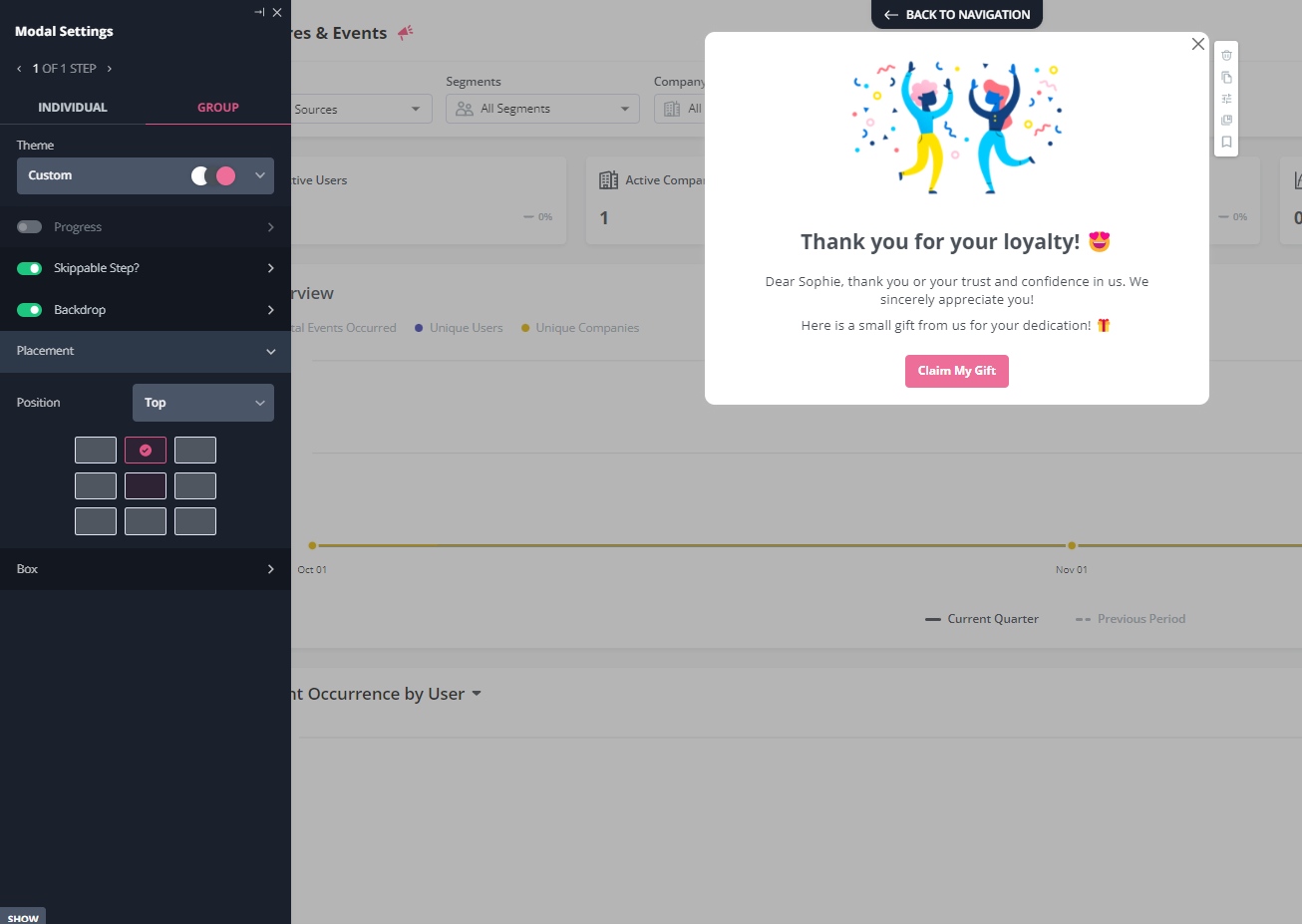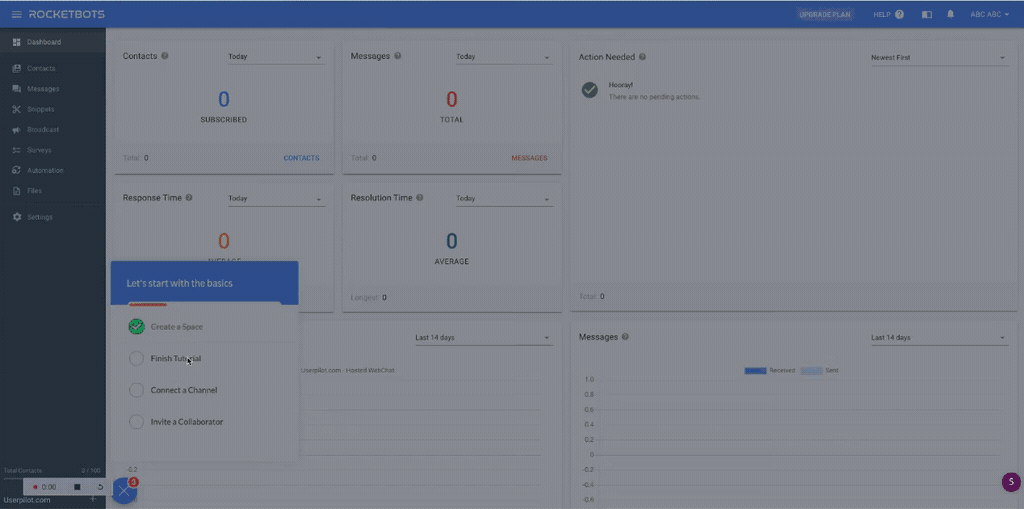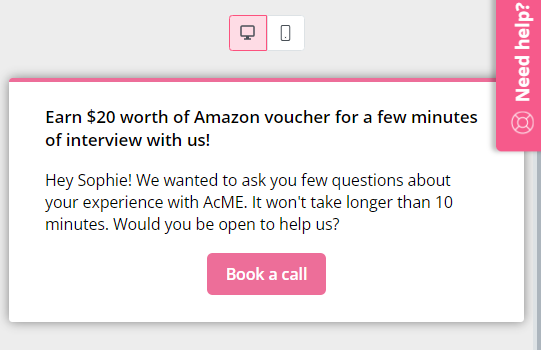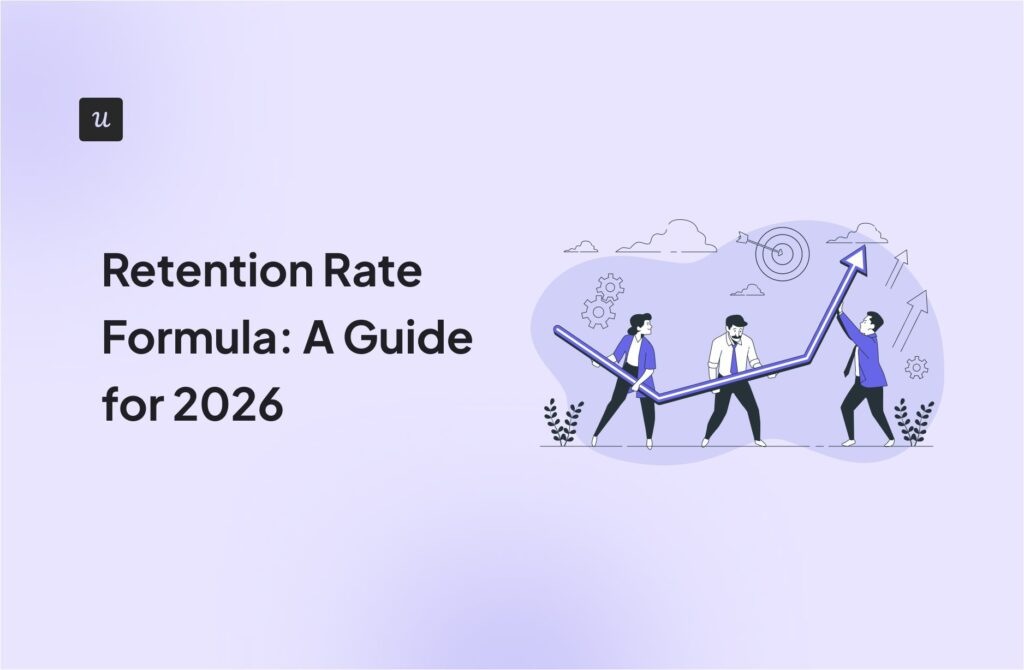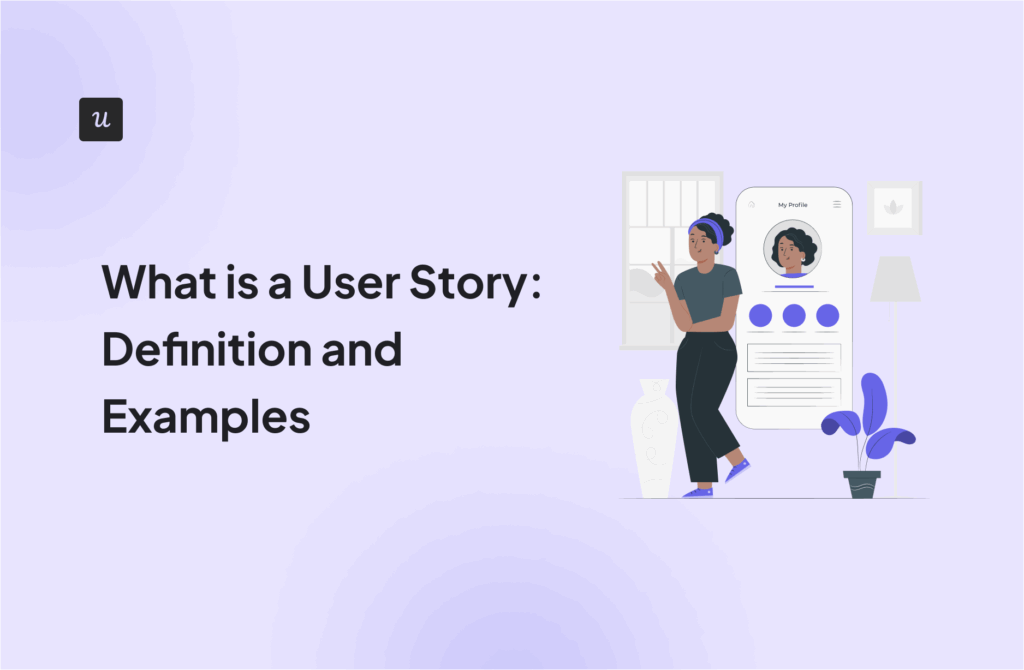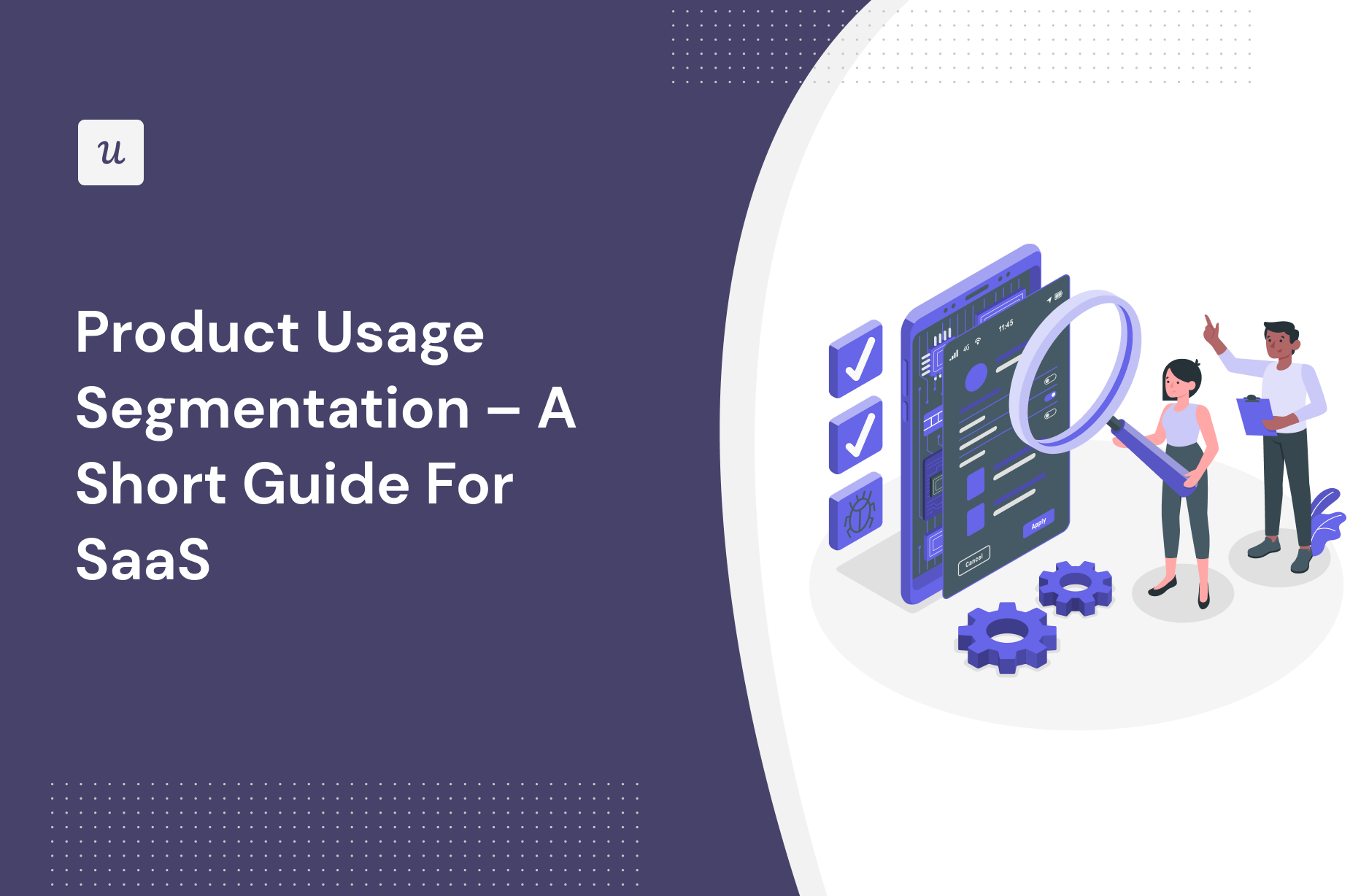
What is product usage segmentation? How can you harness product usage data to improve user segmentation and boost the growth of your SaaS?
You’ll find answers to these questions below.
This guide will help you get a basic understanding of different types of usage data and how you can use them to improve your product and user experience.
How are you currently analyzing product usage data?
What is your primary goal with product usage segmentation?
How do you currently create user segments?
What’s the biggest challenge you face with your current product usage segmentation strategy?
Ready to master product usage segmentation without writing any code?
It looks like you’re ready to move beyond basic analytics. See how Userpilot can help you create powerful segments to drive activation, adoption, and retention.
Try Userpilot Now
See Why 1,000+ Teams Choose Userpilot

Summary product usage segmentation
- Product usage data refers to information gathered from user interactions with a product or service, offering insights into customer behavior.
- It’s crucial for informed decision-making in product development, marketing, and user experience enhancement.
- Product usage segmentation involves categorizing users based on how they engage with your product.
- This segmentation allows for personalized marketing strategies and targeted communication tailored to specific user groups.
- Segments can be based on actions, achieved goals, retention rates, feedback, and more.
- Each segment provides valuable insights into user behavior and preferences, guiding targeted efforts for retention and conversion.
- Segment users based on engagement levels, user journey stages, and collected feedback.
- This segmentation enables personalized communication and tailored strategies to improve customer retention and convert trial users into paying customers.
- Userpilot facilitates advanced user segmentation based on product usage and in-app behavior. It allows for tracking user actions, setting up in-app goals, and creating personalized user experience flows, all without the need for coding. Book a demo to learn more!
What is product usage data and why is it important?
Product usage data refers to the information collected from users’ interactions with a product or service.
This data encompasses various metrics such as frequency of usage, duration of usage, features utilized, actions taken within the product, and patterns of engagement. It provides insights into customer data from your app or site.
Product usage data allows SaaS product managers and developers to make informed decisions about product roadmaps and product lifecycle.
Product usage analytics is superior to other sources of customer behavior information such as surveys because they provide objective quantitive data on how the users really engage with the product.
Without such data, product and development teams would be left groping in the dark and trying to guess what the customers may need, which is particularly hard if they often don’t realize that themselves.
What is product usage segmentation?
Product usage describes the interactions of users with your product, service, or feature.
Data about how, when, and for how long a customer uses the product. This type of data is generated whenever the user interacts with the product and is used to enhance informed decision-making.
Product usage segmentation is all about building very specific user segments based on how your users engage with your product, using the product usage data you’ve collected.
Different types of product usage segmentation data
There are lots of types of product usage data you could collect data on and use to build specific segments.
Depending on what you are trying to achieve and how different groups see your product, some of them are more relevant than others.
Product managers are interested in data on what user does within the app and whether they get the job done. That’s why they may be interested in looking at:
- Actions: What users do after they log into the product.
- Achieved goals/completed tasks: If users accomplished what they originally intended, or if they finished an action after they started it.
- Retention: If they return to use the same features of the product again, and how many subscription payments they didn’t miss.
- Feedback: If they complete any surveys or interact with the support team while using the product.
Product usage analytics can provide insights into a range of things, including:
- What the most popular features are.
- What issues do your users face?
- How “sticky” a feature is.
- How adoption differs between different user segments.
- What the friction points are and where do the customers need an extra push?
With all of the collected data, you can easily perform:
- Market segmentation
- Behavioral segmentation
- Geographic segmentation
- Psychographic segmentation
- Product segmentation
How to perform product usage segmentation
Customer segmentation is the main reason for tracking product usage.
Dividing the users into segments allows the development team, marketing team, or customer success team to take more meaningful actions.
Segment customers based on in-app engagement
Users who engage with your product regularly require a different approach from those who don’t.
By looking at key metrics such as customer health score or customer engagement score, you can segment your user base into those two groups. Once you know which users have the highest usage and which lowest, you can engage them more effectively with your messaging.
You can also track the engagement frequency of your core features and build user segments of your highly engaged users or the opposite, disengaged users who are at risk of churning. Once you have these, you can reach out with personalized messages to each.
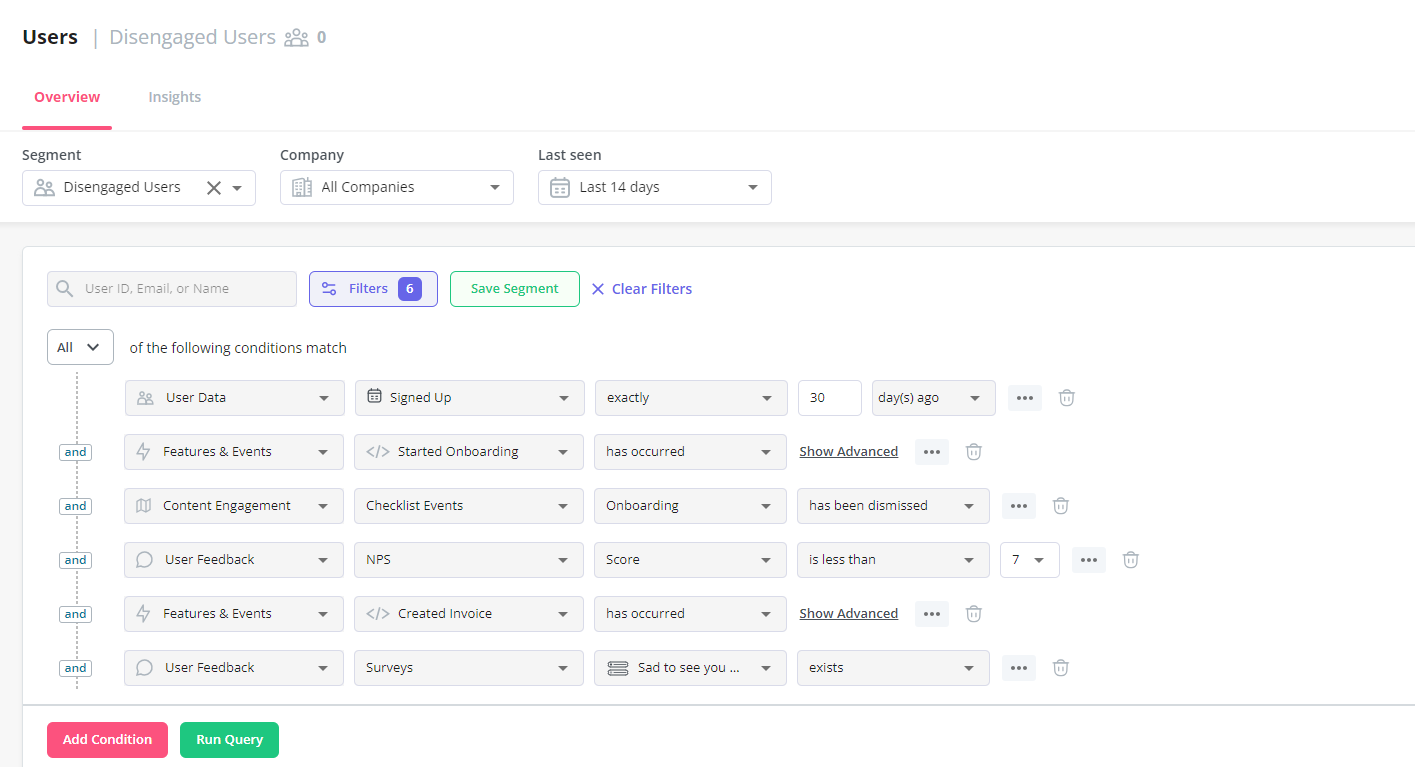
Segment customers based on the user journey stage
Another way to segment your users is by the milestones they reach in their user journey.
Where your user is in their journey will have an impact on what type of marketing message will be most effective for them.
Track milestones using goals- a set of custom events or in-app engagements or simply build segments tracking when specific events happened altogether, meaning the user has reached a specific milestone.
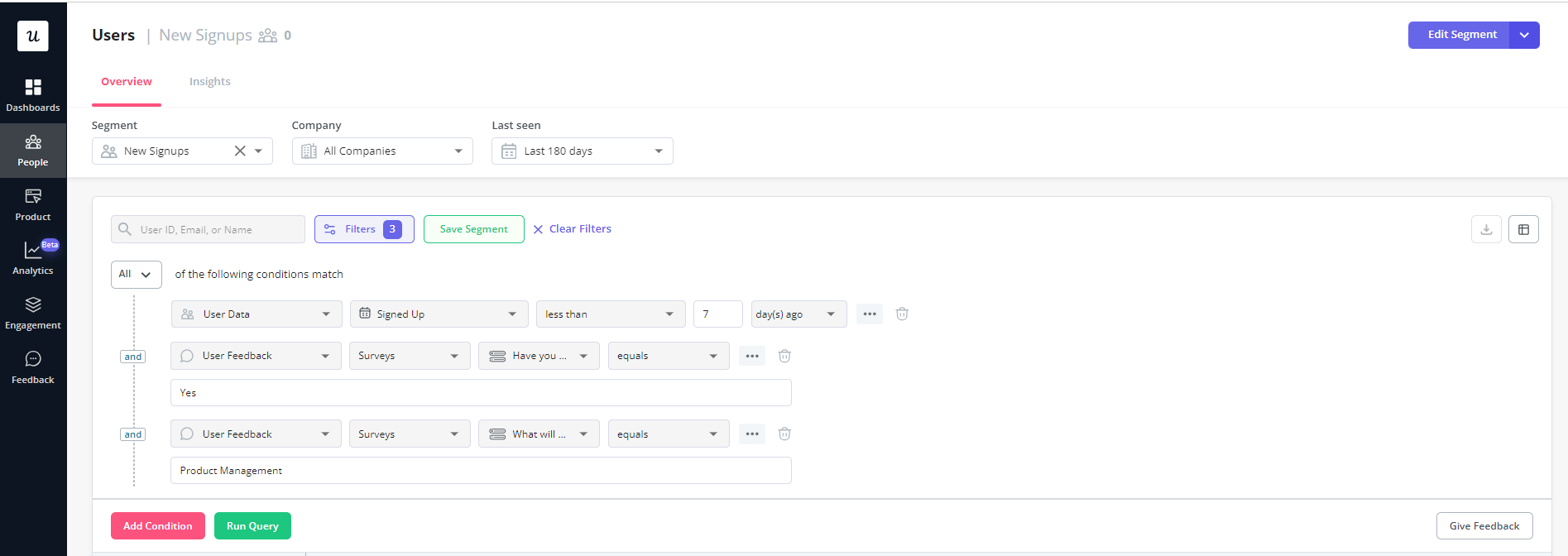
The groups that are stuck at a particular stage may need help and the communication should aim to help them move on.
Messages introducing advanced features, on the other hand, may be completely lost and possibly even frustrating to users who haven’t started using the app (aka engaged with its main key features).
Conversely, the users who have swiftly and fully explored the core product features may benefit from in-app messages introducing more advanced functionalities.
Segment customers based on collected feedback
The final way to segment the users relies on the feedback collected from users.
For example, you could use the NPS score or survey responses to divide them into two main groups: loyal customers and detractors.
Next, the first group can be contacted for a more detailed review.
The latter group, on the other hand, could be offered a helping hand so that they don’t churn.
How to use product usage segmentation to improve customer retention
Create marketing strategies for different customer groups
Begin by analyzing product usage data to uncover patterns such as frequency of use, feature adoption, and engagement levels. This analysis will help you identify different segments of users, such as power users, occasional users, and dormant users.
With a clear understanding of each segment, tailor your marketing strategy to resonate with their unique needs and motivations. Create separate marketing campaigns that highlight the benefits and value propositions most relevant to each group.
Focus your marketing efforts on designing targeted offers, promotions, and incentives to encourage desired behaviors within each segment.
Identify and duplicate positive trends to improve activation
Looking at your most active users (based on LTV) can help you understand which parts of your product are driving value.
For example, let’s imagine that user segment A uses the product to complete JTBD no 1 and consistently uses features X-Y-Z.
If you understand this, you can reach out to other users who are only using features X and Y and use in-app guidance, as the tooltip in the example below, to help them discover feature Z that will bring value.
That will translate into greater user retention.
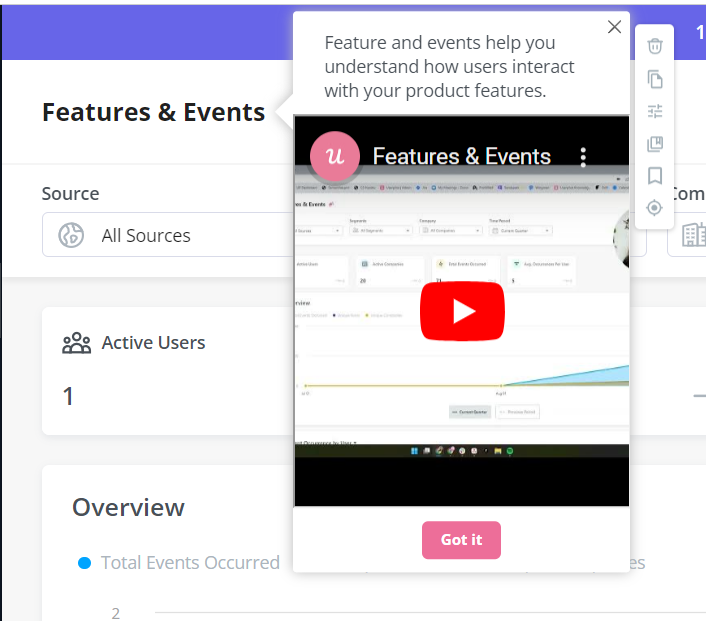
Convert trial users to paying customers
For active users, focus on reinforcing positive experiences with targeted communication and loyalty rewards. Offer usage-based incentives to encourage continued engagement and provide comprehensive product education and onboarding resources to maximize value.
Craft retention-oriented messaging that emphasizes the long-term benefits of your product, using targeted communication channels preferred by each segment. Continuously monitor customer behavior and retention metrics to track effectiveness and optimize strategies.
Remove friction and improve customer satisfaction with proactive guidance
It’s not only the trial users that get stuck but also the paying ones, and they all need your attention if you don’t want to lose them.
Product usage data tells you which users and what part of the product they find hard to use.
Armed with that knowledge, you can build interactive guides to help them engage with the relevant features for the first time.
Would you like to see a good example? Have a look at how Userpilot helped Rocketbots to guide their users to Aha! moment.
Upsell relevant features to different customer segments
Using product usage data lets you create segments and identify the users who would benefit from specific premium features.
Next, you can use the usage data to contextually trigger appropriate in-app messages to drive your upsells.
Loom’s modal offering an upgrade to the paid version
Collect feedback from power users to improve your product
Behavioral segmentation allows you to identify the most loyal groups of users, who can be a source of invaluable feedback.
Having identified the users with positive KPIs, you need to ask them about the changes and improvements they would like to see in the product. Satisfied customers are more likely to provide in-depth feedback that you can use to guide further development.
Just don’t take them for granted and make sure you offer them some incentive to take part in your surveys.
Access to beta features or a gift voucher could be a good start, and with time you could develop a comprehensive loyalty program.
How to collect product usage data and perform segmentation with Userpilot
Userpilot is a product growth platform that enables you to track user behavior on a deep level and create different customer segments for product usage.
Here’s what you can do with Userpilot:
- Create advanced user segments based on product usage and in-app behavior.
- Tag features and track the usage.
- Set up in-app goals and track their completion.
- Create personalized user experience flows with different UI patterns.
And the best part is, you can do all of this completely code-free and with minimal setup effort.
Conclusion
Product usage data tracking gives you a chance to make informed decisions about product development, marketing, and user experience.
If you would like to see how Userpilot could help you leverage product usage data to improve user experience, get a demo!


